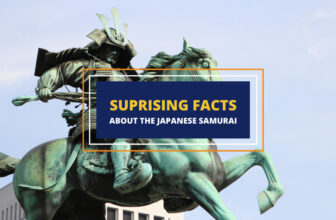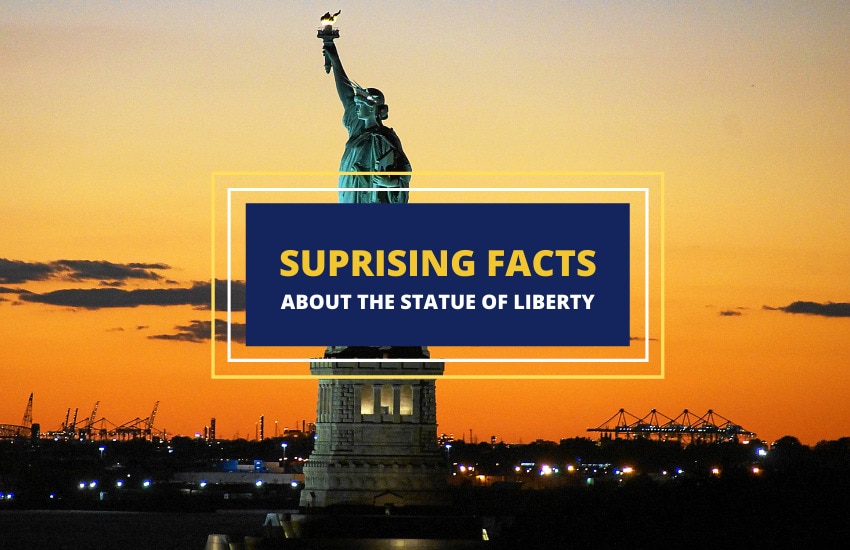
Table of Contents
Statues are more than just pieces of art. They are images of reality frozen in the medium that they are carved out of. Some become much more than that – they can become symbols.
Nothing is a more famous symbol of freedom and American values than the towering sculpture on Liberty Island in New York Harbor in New York City in the United States. This iconic landmark was designated as a UNESCO World Heritage Site in 1984. It is none other than the Statue of Liberty, with the official name of Liberty Enlightening the World.
Most of us would recognize it easily but how many of us know much about it? Here are a few things that you possibly still don’t know about America’s most beloved statue.
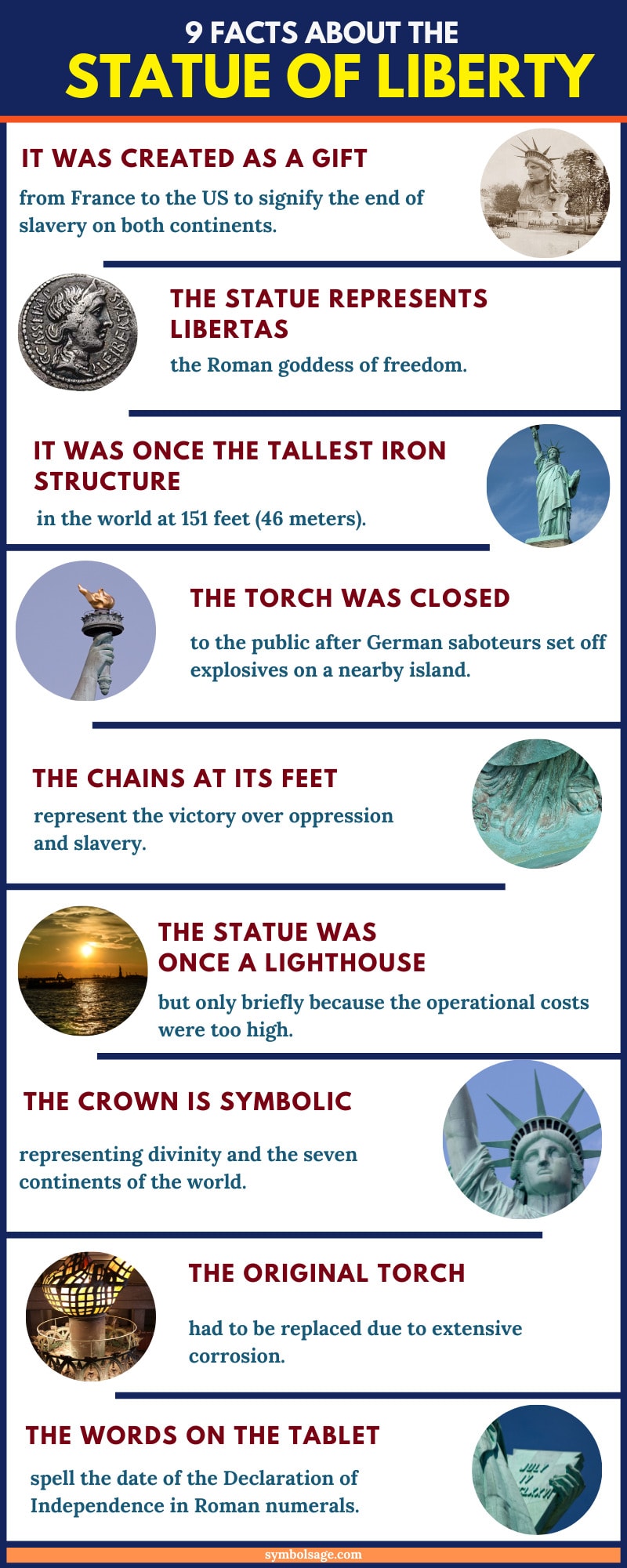
1- It Was Created as a Gift
The statue was conceived by Edouard de Laboulaye and designed by Frederic-Auguste Bartholdi, who’s well-known for his contribution to the statue. Another notable project of his was the Lion of Belfort (completed 1880), which is a structure carved out of the red sandstone of a hill. It can be found in the city of Belfort in eastern France.
France and the U.S. were allies during the American Revolution and to commemorate both their and the abolition of slavery on the continent, Laboulaye recommended that a large monument be presented to the United States as a gift from France.
Eugene Viollet-le-Duc, a French architect, was the first person given the responsibility of creating the framework, but he died in 1879. He was then replaced by Gustave Eiffel, the now- famous designer of the Eiffel Tower. It was he who designed the four iron columns that hold up the internal framework of the statue.
2- The Design was Inspired by Egyptian Art
The statue, in a slightly different form, was originally designed to stand at the northern entrance to the Suez Canal, Egypt. Bartholdi had visited the country in 1855 and was inspired to design a huge statue in the same spirit of grandeur as the sphinx.
The statue was supposed to symbolize Egypt’s industrial development and social advancement. Bartholdi’s suggested name for the statue was Egypt Bringing Light to Asia. He designed a female figure nearly 100-feet tall with her arm lifted and a torch in her hand. She was intended to be a lighthouse that welcomed ships safely into the harbor.
However, the Egyptians were not keen on Bartholdi’s project because they felt that, after all the expense of building the Suez Canal, the statue would be prohibitively expensive. Later in 1870, Bartholdi was able to dust off his design and use it, with a few changes, for his liberty project.
3- The Statue Represents a Goddess
The lady wearing a robe represents Libertas, the Roman goddess of freedom. Libertas, in Roman religion, was the female personification of liberty and personal freedom.
She is often depicted as a matron wearing a laurel wreath or a pileus. A pileus was a conical felt cap given to freed slaves so is a symbol of liberty.
The statue’s face was said to be modeled on the sculptor’s mother, Augusta Charlotte Bartholdi. However, others argue that it was based on the features of an Arabic woman.
4- It Once Held the Title of “Tallest Iron Structure”
When the statue was first constructed in 1886, it was the tallest iron structure ever built at that time. It towers over 151 feet (46 meters) tall and weighs 225 tons. This title is now held by the Eiffel Tower in Paris, France.
5- The Reason the Torch is Closed to the Public
Black Tom Island was once considered an independent land in New York Harbor before it was connected to the mainland and made a part of Jersey City. It is located right beside Liberty Island.
On July 30, 1916, several explosions were heard at Black Tom. It turned out that German saboteurs had set off explosives because America had shipped weapons to European countries that were battling Germany in World War I.
After that incident, the torch of the Statue of Liberty was closed to the public for a period of time.
6- The Statue Features a Broken Chain and Shackles
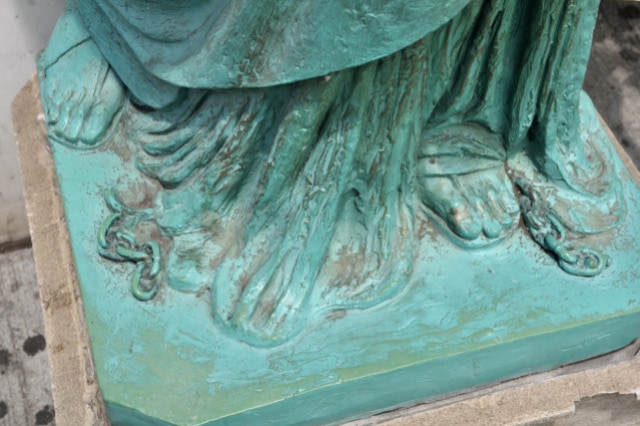
Since the statue was made to also celebrate the end of slavery on the American continent, it was expected that it would include the symbolism of this historic event.
Originally, Bartholdi wanted to include the statue holding broken chains, to symbolize the end of slavery. However, this was later changed to the statue standing above broken chains.
Although it is not that prominent, there is a broken chain at the base of the statue. Chains and shackles generally symbolize oppression while their broken counterparts, of course, signify freedom.
7- The Statue Has Become a Symbol
Because of its location, the statue was commonly the first thing that could be seen by immigrants when they arrived in the country by boat. It became a symbol of immigration and the start of a new life of freedom during the second half of the nineteenth century.
At this time, more than nine million immigrants arrived in the United States, with most of them probably seeing the towering colossus upon their arrival. It’s location had been strategically chosen for this very purpose.
8- It Was Once a Lighthouse
The statue briefly served as a lighthouse. President Grover Cleveland declared that the Statue of Liberty would operate as a lighthouse in 1886, and it operated from then until 1901. For the statue to become a lighthouse, a light had to be installed in the torch and around its feet.
The chief engineer in charge of the project designed the lights to point upwards instead of the conventional outwards because this would illuminate the statue for ships and ferries at night and during poor weather, making it highly visible.
It was used as a lighthouse because of its excellent location. The Statue of Liberty’s torch could be seen by ships 24 miles from the statue’s base. However, it stopped being a lighthouse in 1902 because the operational costs were too high.
9- The Crown Has a Symbolic Meaning
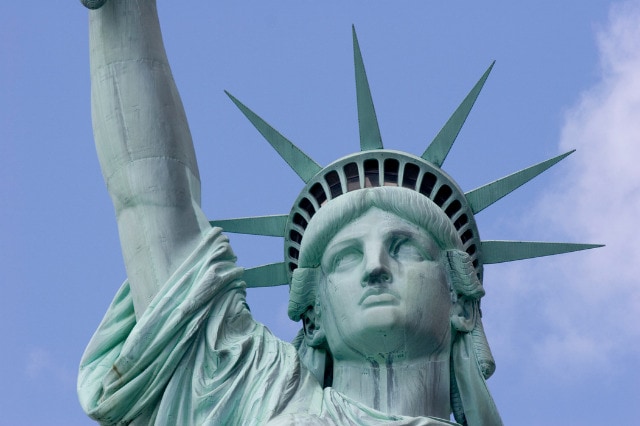
Artists often incorporate symbolism into paintings and statues. The Statue of Liberty also has some hidden symbolism. The statue wears a crown, which signifies divinity. This comes from the belief that rulers were like gods or were chosen with divine intervention which gives them the right to reign. The seven spikes of the crown represent the continents of the world.
10- The Statue Was Renovated Between 1982 and 1986
The original torch was replaced due to corrosion. The old torch can now be found at the Statue of Liberty Museum. The new parts of the torch were made of copper and the damaged flame was repaired with gold leaf.
In addition to this, new glass windows were installed. Using the French technique of embossing called repousse, which is the careful hammering of the underside of the copper until it achieves its final shape, the shape of the statue was restored. Bartholdi originally used the same embossing process when creating the statue.
11- There’s Something Written on the Tablet
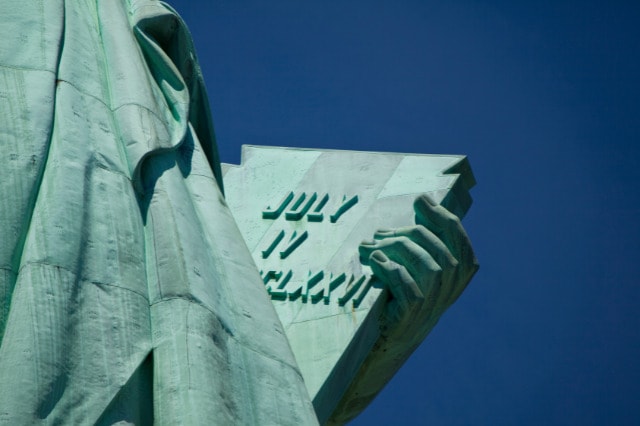
If you look closely at the statue, you will notice that aside from the iconic torch, the lady is also carrying a tablet in her other hand. While it’s not immediately noticeable, there’s something written on the tablet.
When viewed in the right position, it reads JULY IV MDCCLXXVI. This is the Roman numeral equivalent of the date when the Declaration of Independence was signed – July 4, 1776.
12- The Statue is Really Famous
The first film to depict a destroyed or post-apocalyptic statue was a 1933 film called Deluge. The Statue of Liberty was featured in the original Planet of the Apes movie in a post-apocalyptic world, where it was shown to be buried deep in the sand. It has also appeared in numerous other movies due to its symbolic significance.
Other famous movie appearances are in Titanic (1997), Deep Impact (1998), and Cloverfield (2008) to name just a few. It is now an icon of New York City that is well known all over the globe. The statue’s image can be seen on shirts, keychains, mugs, and other merchandise.
13- The Project Was Funded Unexpectedly
To raise funds for the pedestal to be built, the head and the crown were displayed both in New York and Paris. Once some funds had been collected, the construction continued but it was later stopped temporarily due to lack of funding.
To gather more funds, Joseph Pulitzer, a well-known newspaper editor, and publisher, encouraged the masses to not wait for others to fund the construction but to step up themselves. This worked and construction continued.
14- Its Original Color Was Reddish-Brown
The current color of the Statue of Liberty is not its original hue. Its true color was reddish-brown because the exterior was mostly made of copper. Due to acid rain and exposure to air, the copper outside has turned blue green. The whole process of color change took merely two decades.
One advantage of this is that the discolored coating, often called the patina, prevents further corrosion of the copper inside. This way, the structure is preserved from further deterioration.
Wrapping Up
Since its conception to the present, the Statue of Liberty has stood as a beacon of hope and freedom for many – not only for Americans but also for anyone who sees it. Although it’s one of the most famous statues in the world, there is still much to know about it. With its pillars still standing strong, it will continue to inspire people for years to come.





